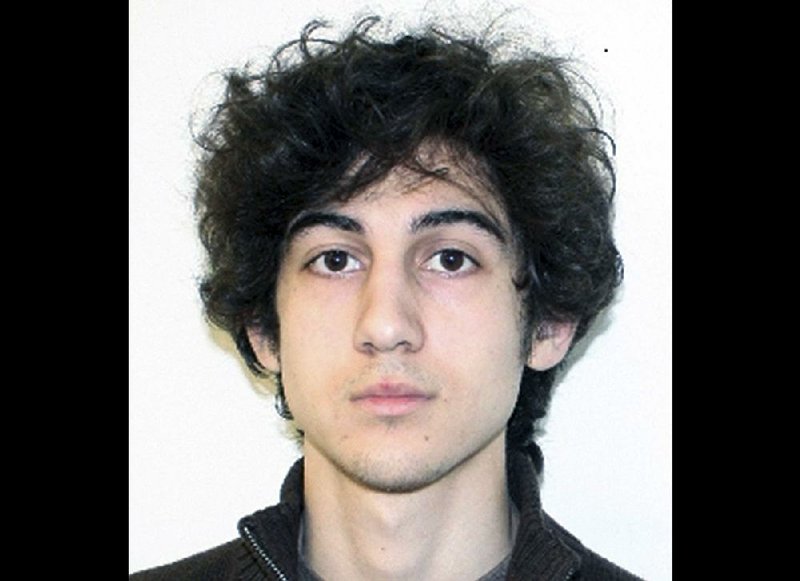BOSTON -- Prosecutors rested their case against Boston Marathon bomber Dzhokhar Tsarnaev on Monday after jurors in his federal death penalty trial saw gruesome autopsy photos and heard a medical examiner describe the injuries suffered by an 8-year-old boy killed in the 2013 terror attack.
At least three jurors cried and wiped their eyes with tissues as they looked at photos of Martin Richard, who went to watch the marathon with his parents and siblings April 15, 2013, and was killed when the second of two pressure-cooker bombs exploded near the finish line.
The boy's parents watched from the second row of the courtroom. Bill Richard kept his arm around the shoulder of his wife, Denise, throughout the testimony.
Dr. Henry Nields, chief medical examiner for Massachusetts, said Martin received injuries to virtually every part of his body, including lacerations of his liver, left kidney and spleen; broken bones; and third-degree burns. His stomach was also ruptured.
Nields said he removed small nails, metal pellets, fragments of wood and black plastic from the boy's wounds. He also displayed the bloodstained, shredded clothing that Martin was wearing when the bomb exploded.
Tsarnaev's lawyer told the jury during opening statements that Tsarnaev participated in the bombings but that his older brother, Tamerlan, was the driving force behind the attack. Prosecutors believe that the brothers were seeking retaliation against the U.S. for wars in Muslim countries.
Three people were killed and more than 260 were injured in the bombings.
After the prosecution rested its case, Tsarnaev's lawyers began theirs. They have made it clear since testimony began March 4 that their strategy during the two-phase trial is not to win an acquittal for Tsarnaev but to save him from the death penalty.
The first defense witness was Michelle Gamble, an FBI field photographer who testified earlier Monday for prosecutors, describing various photos and a video showing the scene of the second blast both before and shortly after the explosions.
In one of the photos, Martin Richard, his sister and several other children stand on a metal barricade. Tsarnaev appears to be just a few feet behind Martin and his sister.
While cross-examining Gamble, Tsarnaev's lawyers showed other photographs with several people in between Tsarnaev and the children, an apparent attempt to show that Tsarnaev didn't purposefully target them with the bomb.
When the defense called Gamble as its first witness, Tsarnaev's lawyer, Miriam Conrad, asked her about a book titled Wiring that was found during a search of the Tsarnaev family's apartment in Cambridge.
Tsarnaev's lawyers have tried to show that he was not living in the apartment when the bombings occurred because he was attending the University of Massachusetts-Dartmouth. Tamerlan Tsarnaev was living in the apartment with his wife and their young daughter.
Another witness called by the defense was a data analyst who said Tsarnaev's cellphone was being used in southeastern Massachusetts where he was attending college while pressure cookers were being purchased north of Boston more than two months before the bombing. The analyst also testified that large quantities of BBs were purchased a little over a month before the attack in two Wal-Mart stores in New Hampshire, at a time when Tsarnaev's cellphone was again being used near his school.
The defense will try to show that Tamerlan Tsarnaev was more culpable in the attack and in the killing three days later of Massachusetts Institute of Technology police officer Sean Collier.
Once the defense's case is complete, jurors will deliberate on whether Tsarnaev is guilty of the 30 federal charges against him in the bombing, in Collier's killing and for his role in a violent confrontation with police in Watertown. Tamerlan Tsarnaev, 26, was killed during the confrontation, both by gunshots and from being run over by Dzhokhar as he escaped. Dzhokhar Tsarnaev was found more than 18 hours later hiding in a boat parked in a yard.
If the jury convicts Tsarnaev, the trial will move on to the second phase, when the same jury will hear more evidence to decide whether Tsarnaev should be put to death or should spend the rest of his life in prison.
A Section on 03/31/2015
